B8 | Canon and fugue
- Canons and fugues are a type of compositions where composers treat melodic material by means of imitation.
- Whilst analysing such pieces, the term subject is used to refer to the melody. The term is used in reference to melodies which consist of features which are developed by the composer in the piece whilst the ‘melody’ suggest that it is played or sung in the same style each time.
Canon
A canon imitates on the same note and is similar to ring songs such as Ble Mae Daniel? (fig.1) or Daw Hyfryd Fis.
Have a look at the extract below and notices the chord pattern; the harmony is simple and constantly moves from the dominant to the tonic
Fig. 1
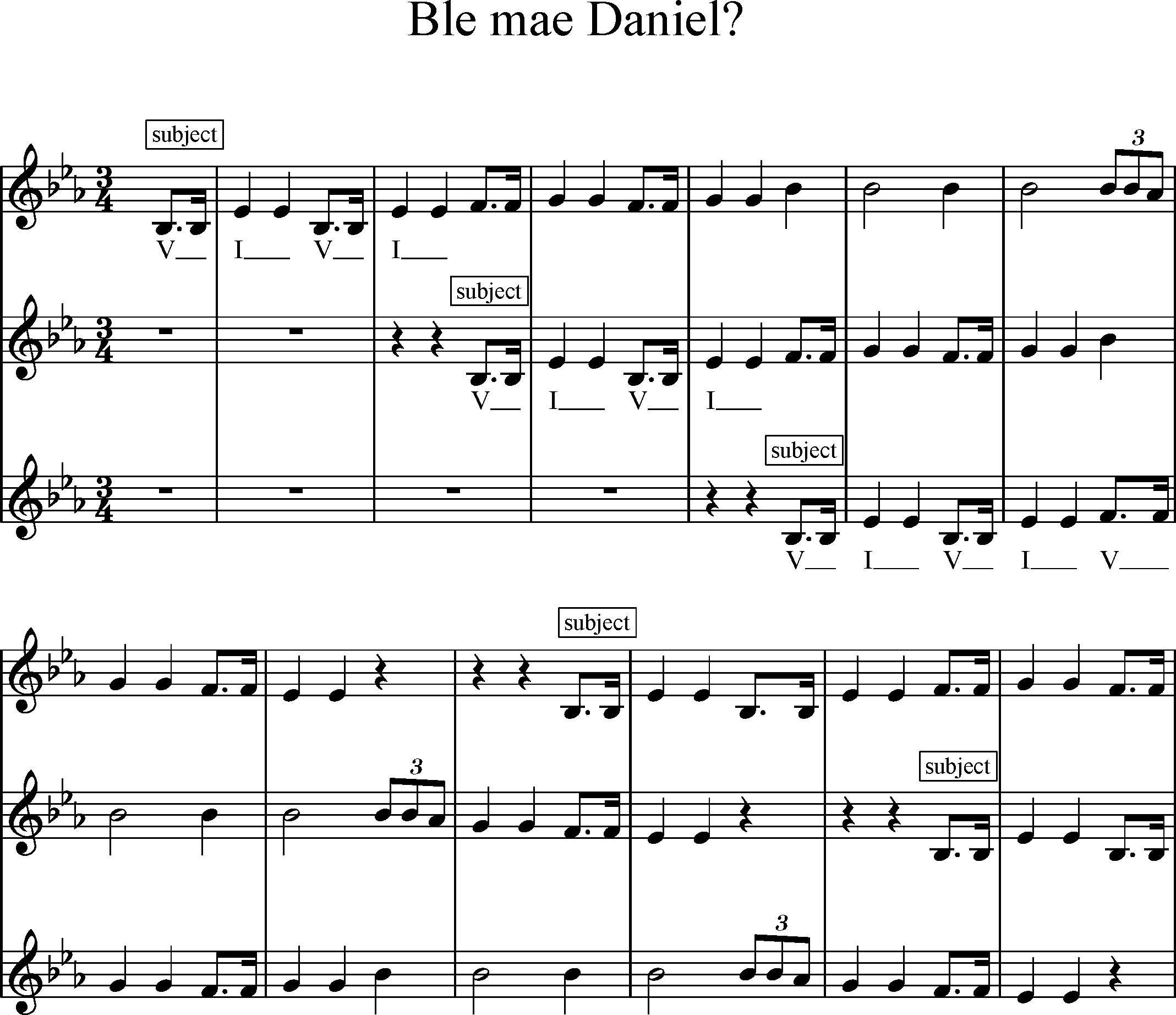
Fugue
A fugue is different to a canon as the subject is ‘answered’ either by:
- a true answer which is an imitation on an interval of a 5th above or a 4th below.
- a tonal answer which is an imitation on an interval of a 5th above or a 4 below, but some of the intervals are adapted so that they can remain in the tonic key.
A tonal answer is usually used if the dominant note is at the beginning or near the beginning of the subject. Also, if the subject transposes at the end or includes a jump of a 5th close to the beginning of the subject.
In the extract below (fig.3) from the work of J. S. Bach – Invention No 10 (BWV 781) – the opening melody in the treble is imitated in the bass.
https://www.youtube.com/watch?v=31r5ZgWeC0o&t=1007s (No 10 begins on 16’42”).
The subject is based on the tonic chord and is followed by a true answer on the dominant note in the second bar.
Fig. 3
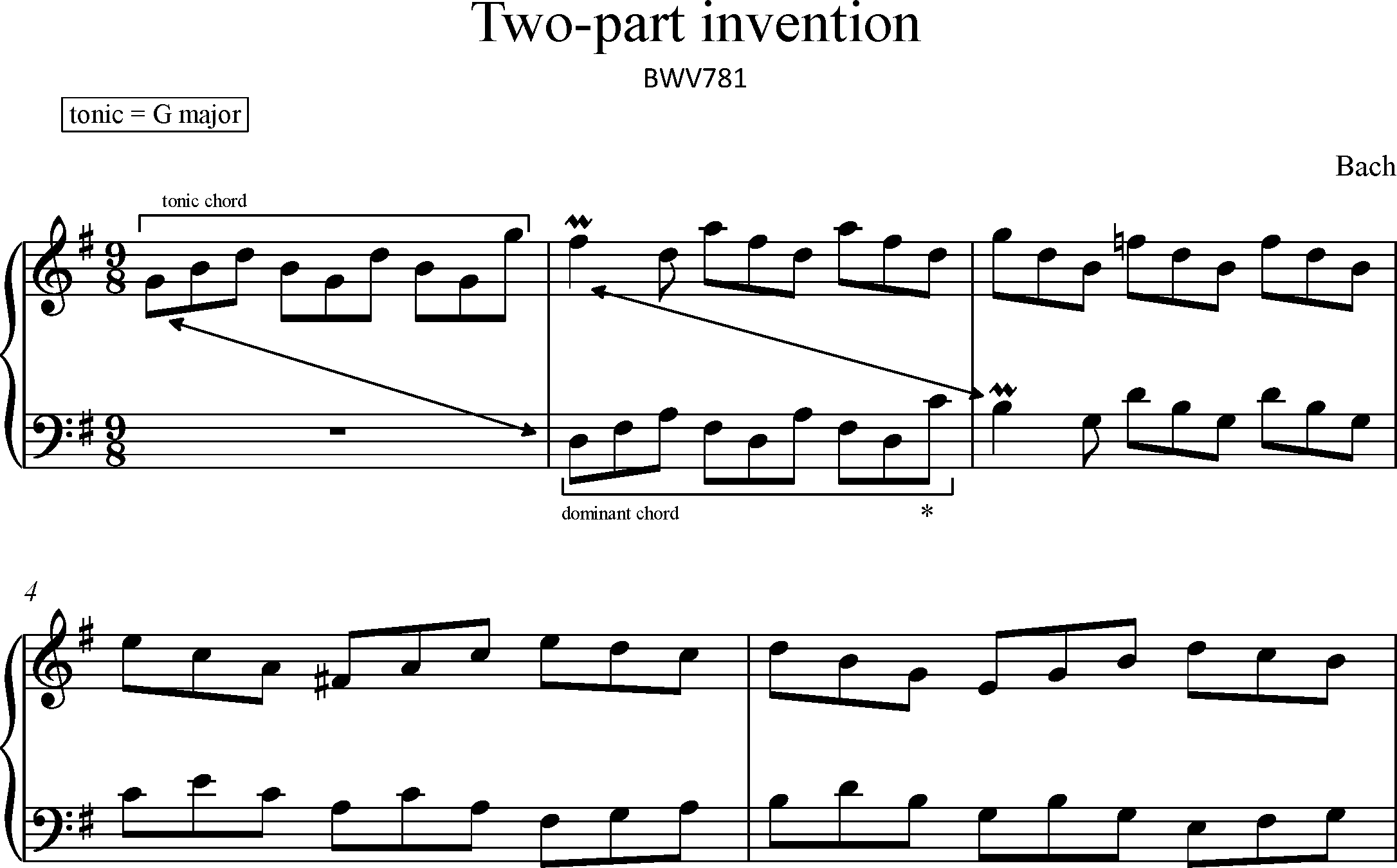
Bach uses the fugue to deal cleverly with the subject in works such as Short Prelude and Fugue No 8 which was composed for organ (BWV553 – 560).
All these works consist of a prelude, which is a free structured piece leading to a fugue. Here is the opening section passage, known as the ‘exposition’:
| Bar number | Material | Key | Key Location of the material |
|---|---|---|---|
|
1 |
Subject |
Tonic (D minor) |
Right hand, treble part |
|
2 |
Answer |
Dominant minor (A) |
Left hand, the high bass |
|
3 |
Subject |
Tonic (D minor) |
Left hand, the low bass |
|
4 |
Answer |
Dominant minor (A) |
Pedals (feet) |
Figure 4 below is an extract of bars 1–12 with a perfect cadence in the dominant minor (A).
Fig. 4
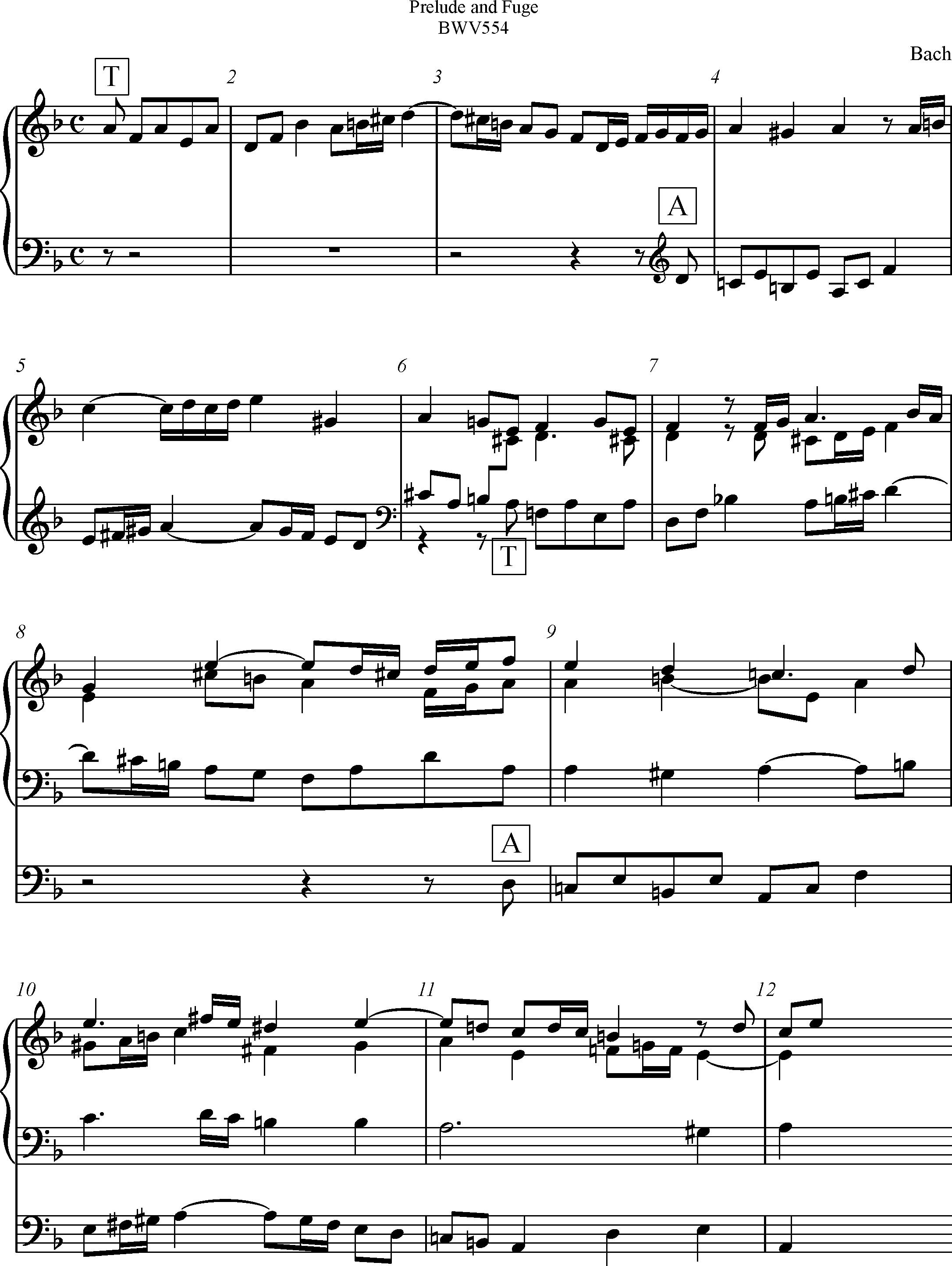
For your convenience, the above quotation has been rewritten; in figure 5 all the parts appear on the treble cleff to make it easier to follow the subject and answer.
Fig. 5
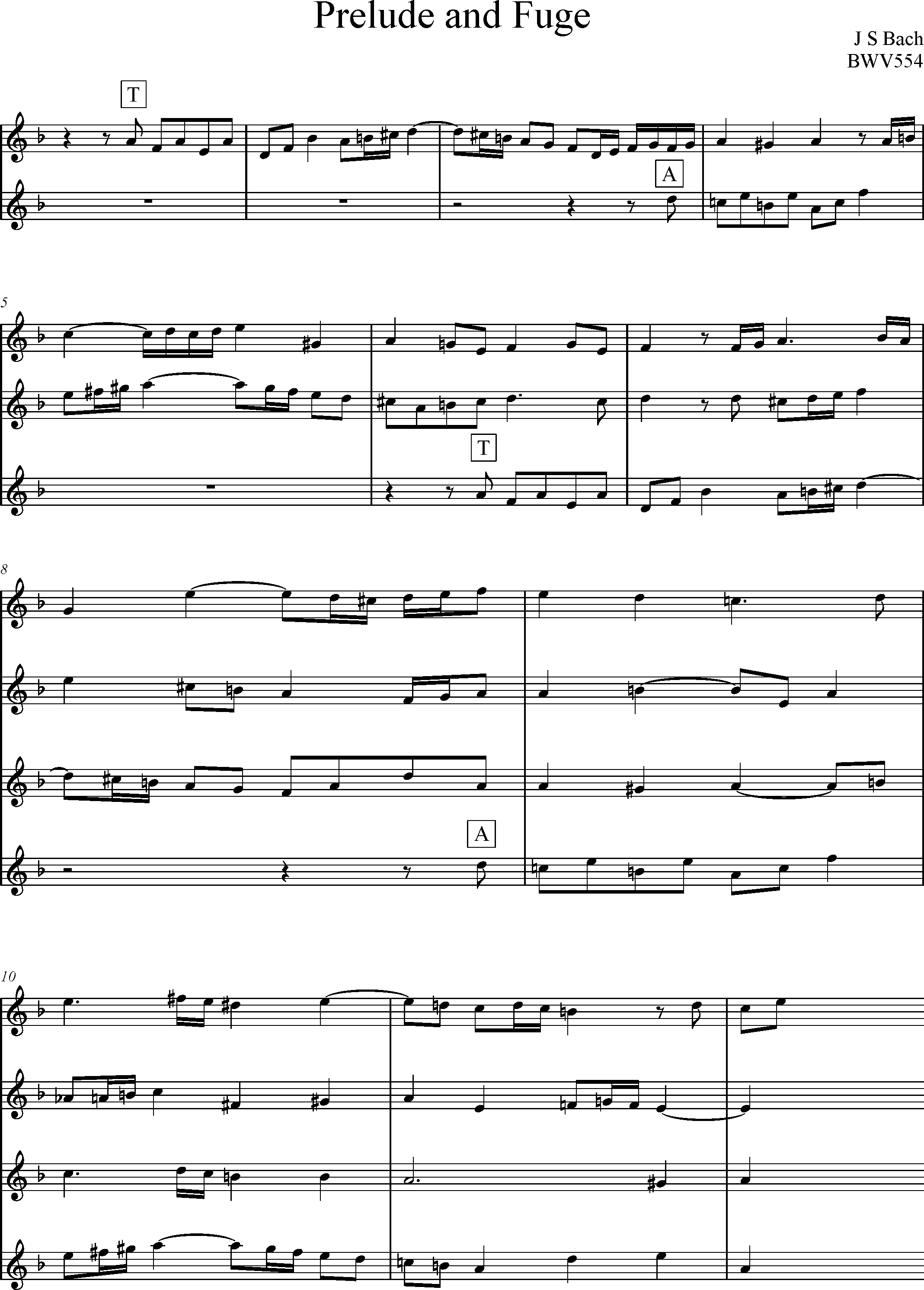
Another feature of the fugue is the stretto which means that the answer overlaps the subject. Here is an extract of the first 5 bars of Fugue No 1 from the 48 Preludes and Fugues by Bach which consist of a subject and true answer.
https://www.youtube.com/watch?v=ezZdbzreNcs (The fugue begins on 1’57)
Fig. 6
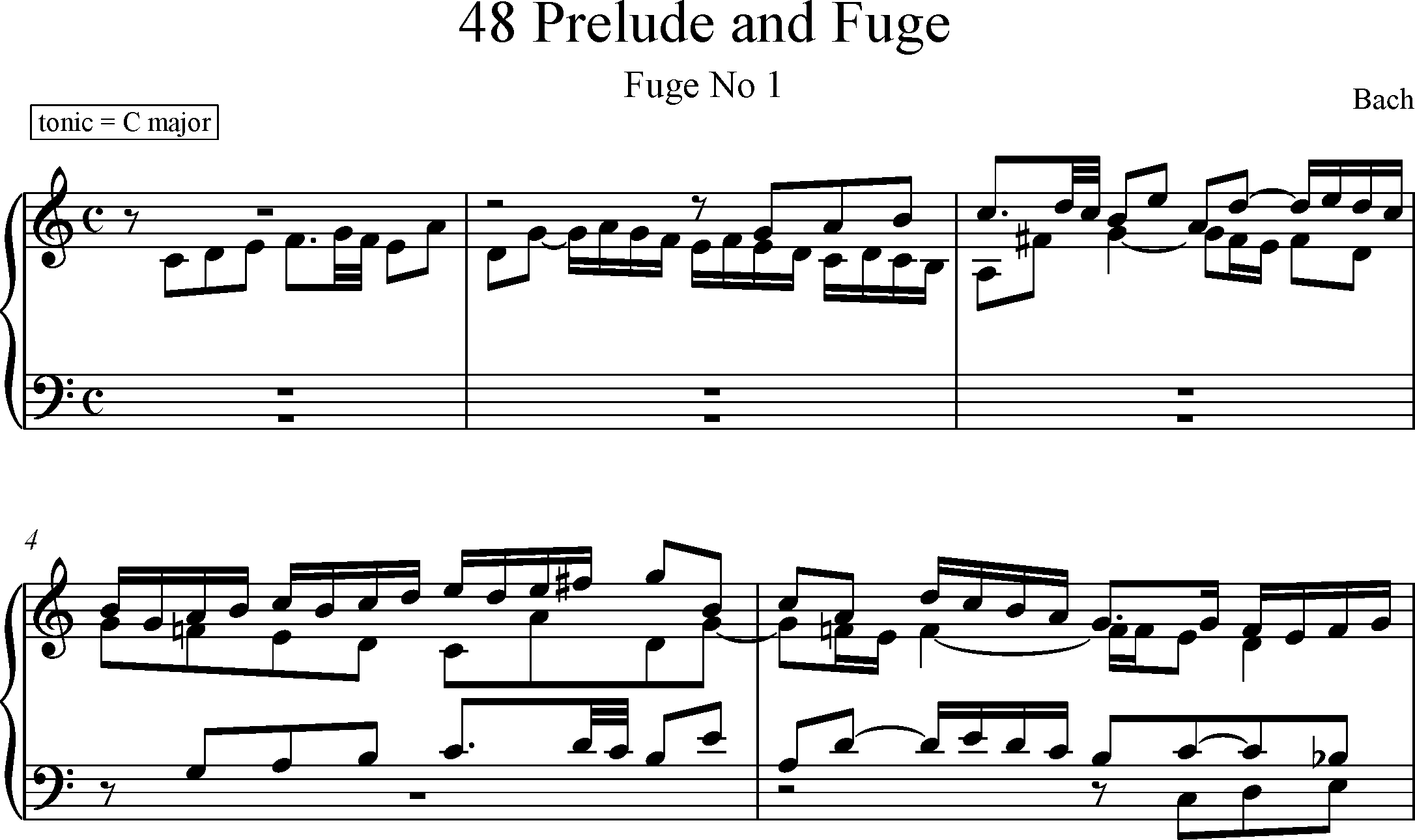
Following the Baroque period, the fugue diminished in importance as a composition tool. However, there are examples of composers from the Classical Period adopting it in their work, e.g. Mozart in the Kyrie movement (Requiem), finale in Symphony No 41 and in the introduction to his opera Die Zauberflöte (The Magic Flute).
Further listening
Beethoven begins the final movement of his String Quartet op.59 No 3 with a fugue section.
Exercises
Composition tasks
Either:
- Analyse the chords used in the exposition. Then compose an original subject and answer to accompany Bach’s harmonic pattern
or:
- Compose a short middle section using motifs from Bach’s subject. Remember that the middle section of the fugue can transpose to other relative keys. Then, look at a copy of th entire piece by Back to see how he developed the subject.